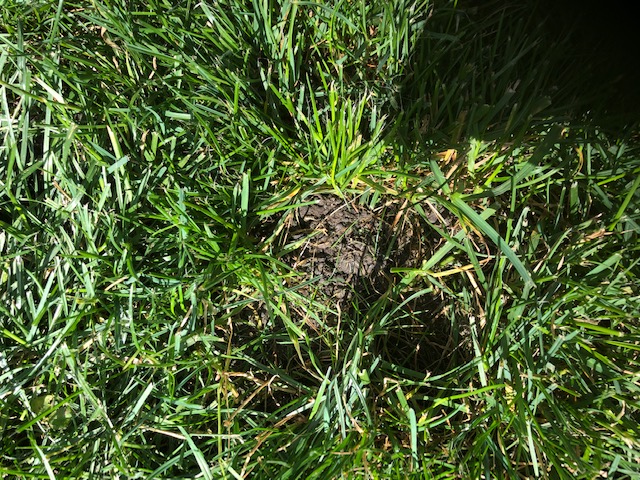
Earthworms
beneficial, occasionally annoying

Earthworms are an important part of soil ecosystems and their presence is an indicator of good soil health.
"It may be doubted whether there are many other animals which have played so important a part in the history of the world, as have these lowly organized creatures." Charles Darwin 1881
There are about 25 known species of earthworms in Canada, many of which were introduced by early settlers. Earthworms burrow through soil creating tunnels that allow air, water and nutrients deep within the soil.
Earthworms belong to the phylum Annelida which means "little rings". Their soft long bodies have up to 150 ringed segments (depending on the species) which help with moving through soil. Each of these segments has muscles and bristles called setae. Earthworms use their setae to anchor part of their body in place while the muscles in the other part of the body contract and relax in order to move forward. Their skin exudes a mucous which helps with movement, keeping the skin moist and stabilizing burrows. They lack lungs and take in oxygen through their skin, which must remain moist.
The worm’s gut extends the entire length of their body and converts nutrients from the plant material they eat into a form that is easily taken up by plants. Microorganisms in soil continue to break down and improve the castings. Earthworm castings (vermicompost) are rich in nitrogen, phosphorus, potassium and other nutrients, as well as beneficial bacteria. Some studies suggest that vermicompost makes plants resistant to certain diseases.
Earthworms are a protein-rich food source for a wide variety of birds, small mammals and insects.
Red wriggler worms can be used in a worm bin for indoor composting. For information see: Vermicomposting
Encouraging earthworms in the garden:
- Regularly add organic matter such as compost or well-composted manure to your soil at the rate of about 3 - 5 cm (1" - 2") every year. Any mulch composed of organic matter such as leaves, straw or shredded wood mulch which has been placed on top of soil is beneficial to earthworms.
- Do not let soil dry to the point that plants wilt or die. Earthworms need a moist environment.
- No cardboard! One reason we do not recommend using cardboard on top of soil in outdoor gardens is because cardboard takes a long time to break down which prevents the entry of oxygen into the soil beneath it. (For example: "lasagne gardening" where layers of organic matter is sandwiched between layers of cardboard.) Earthworms are often observed under cardboard layers, with the mistaken belief that the lasagne gardening method is helping the worms, when in fact, it is not. Earthworms need oxygen to live, so they migrate upward in search of air but are stopped by the cardboard layer. Deprived of oxygen, the worms die. Similarly, plant roots also need oxygen for the plants to thrive. If you are layering plant material to help it decompose, leave out the cardboard!
- Do not apply insecticides.
Lumpy lawns:
Lumpy lawns with small, cone-shaped lumps of what looks like black soil may be caused by earthworms, also called nightcrawlers. The lumps may be annoying but they are actually piles of castings.
The presence of nightcrawlers indicates that your soil is healthy. Nightcrawlers feed on thatch, which is beneficial because a thick thatch build up prevents air and moisture from reaching the roots of your grass. They aerate the soil and their castings are an incredibly rich fertilizer.
Control:
- Rake the lawn regularly to distribute the castings over a wider area of your lawn. The castings are fertilizer and will benefit your lawn.
- Discourage the night crawlers from living in the top layer of the soil by watering deeply and infrequently. Apply 2.5 cm (1") of water every 7 – 10 days unless it rains. This benefits your grass too as it encourages the roots to grow deeper into the soil, making your lawn more resistant to drought.
- If your thatch is thicker than 2 cm (3/4"), consider de-thatching your lawn.
- Tolerate nightcrawlers in your lawn and do not use insecticides.
Sources:
Cornell University Vermicompost research page. (n.d.). Retrieved March 25, 2021, from http://cwmi.css.cornell.edu/vermicompost.htm
Patton, B., & Tilley, L. (n.d.). Nightcrawlers: The natural fertilizer. Retrieved March 26, 2021, from https://www.brandonu.ca/hortline/pests/nightcrawlers-the-natural-fertilizer/
Sherman, R. (2016, October 18). Raising earthworms successfully. Retrieved March 26, 2021, from https://content.ces.ncsu.edu/raising-earthworms-successfully

